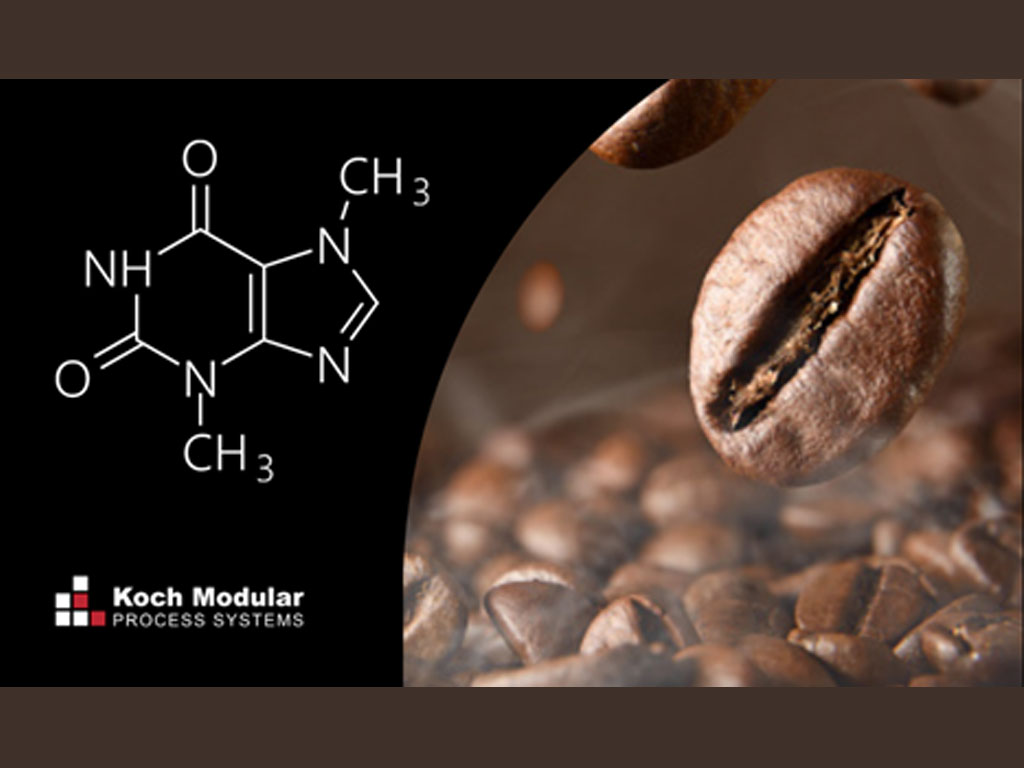Challenge
A challenging aspect of this project was that this process had never been done before. Previously, non-chemical decaffeination has been achieved via batch processes that are expensive and yield flavor losses. Conversely, a continuous process is efficient and extracts caffeine while retaining flavor compounds within the coffee beans. Since there was no plant built like this before, Koch Modular engineers had only laboratory data to work with to scale up to a commercial size. Not to mention, although caffeine content is quantitative and can be measured, taste is subjective and cannot be quantified. This complicates the process and requires coffee specialists to taste the coffee made from the decaffeinated beans and make an evaluation. In an ideal process, nothing but caffeine is extracted from the green coffee beans, resulting in a decaffeinated coffee that is indistinguishable from decaffeinated coffee in terms of flavor and body.
PROCESS
The decaffeination process is unique and chemical-free due to its use of green coffee extract (GCE) consisting of naturally occurring water-soluble compounds found in green coffee. The caffeine is removed from this solution without the use of chemicals. Fresh beans containing caffeine and the other components are added to the GCE solution, where the gradient concentration difference between the caffeine-lean GCE and the caffeine-rich green coffee causes the caffeine molecules to diffuse from the green coffee into the GCE. The other non-caffeine water-soluble coffee elements are retained in the green coffee, allowing for the decaffeinated beans to retain their flavor profile and characteristics. The caffeine-rich GCE effluent is then passed through a carbon filtration system to obtain GCE that is once again caffeine-lean and ready to be reused. The health of the GCE is regularly monitored to ensure it can continue to operate at its best. Throughout the process, time (i.e. soaking duration), temperature, and flow rate are controlled to optimize the driving force which removes caffeine from the green coffee into the GCE.
RESULTS
Koch Modular provided the design of a green coffee bean decaffeination system. The continuous decaffeination of coffee beans was achieved with only water, and minimized the removal of original coffee flavor compounds and characteristics.
